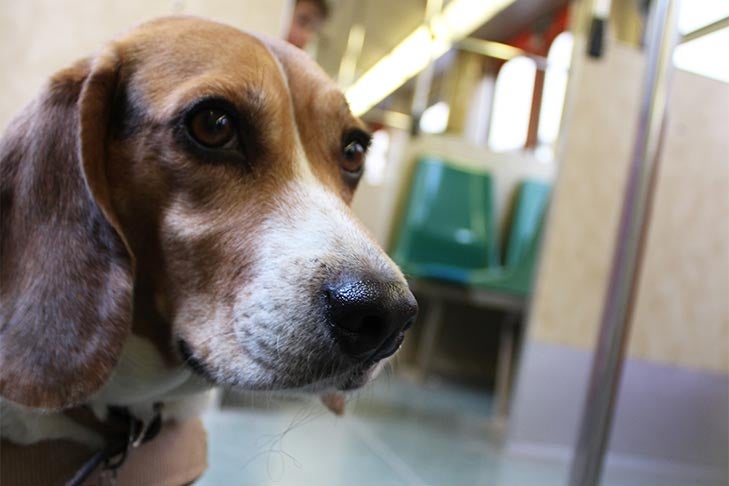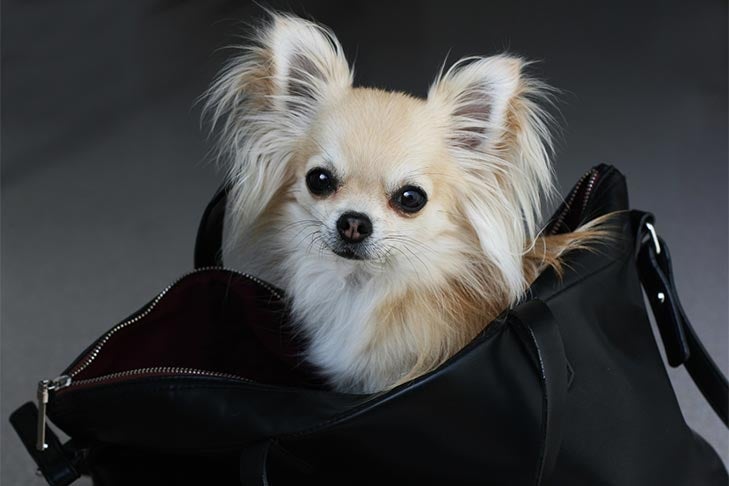
For city dwellers, owning a dog comes with a unique set of challenges — one being transportation. Thanks to public transit, you can get pretty much anywhere with relative ease. But what about those times when you need to bring your dog someplace that’s too far to walk?
These days, most cities allow certain pets to ride on the subways and buses, though there are restrictions. In New York, for example, dogs traveling on the Metropolitan Transit Authority (MTA) must be in a carrier and must not be a nuisance to other riders. If you have a small dog, placing him in a carrier should be no big deal. But since there’s no limitation on the size of container, even people with large dogs are finding ways to transport their pups on the subway — and they’re getting pretty creative with it!
Each city has its own regulations regarding pets and public transit. Washington D.C.’s Metro allows pets in carriers from which they cannot escape. In Chicago, only small pets in carriers are allowed, and the carrier cannot take up a seat or block pathways. San Francisco’s Bay Area Rapid Transit (BART) allows dogs that are secured in a carrier specifically built for pet transport. That means no Ikea bags or other improvised containers. On the other hand, while San Francisco’s Municipal Railway (Muni) doesn’t allow any pets on the train during peak hours, leashed and muzzled dogs can ride during off-peak hours, but you must pay a fare for your dog, and they have to sit on your lap or under your seat.

Wherever you live, you should check your city’s transit authority regulations before traveling with your pup. NOTE: The above limitations do not apply to service dogs. The Americans with Disabilities Act requires that all public transportation allow service animals on board, which are defined as “any guide dog, signal dog, or other animal individually trained to provide assistance to an individual with a disability, regardless of whether the animal has been licensed or certified by a state or local government.” This does not include therapy dogs or those used for emotional support.

Preparing Your Dog for Public Transportation
There’s more to traveling with your dog than having the right carrier. He must be ready for the big adventure, too.
- Is your dog well socialized? Frequent visits to the dog park, plenty of interactions with other humans, and different types of travel may make it easier for your dog to cope with all the strange sights, sounds, and smells on public transit.
- Make sure your dog is up-to-date with his immunizations and vaccines.
- Check the regulations to see if you’ll need a specific type of carrier or muzzle.
- Bring plenty of water and your dog’s favorite treats, chew toys, and whatever else he’ll need to entertain himself and remain calm.
Although there are other options for getting around with your dog, including taxis and ride shares (or a good friend with a car), there are ways you and your pup can ride public transit responsibly. And you never know, he may just become the darling of the subway car.
AKC’s Statement on the Misuse of Service Dogs
Service dogs are defined as those that are individually trained to do work or perform tasks for people with disabilities. The AKC strongly supports public accommodations that allow individuals with disabilities to use service dogs.
The AKC strongly condemns characterizing dogs as service animals when they are not, or attempting to benefit from a dog’s service dog status when the individual using the dog is not a person with a disability.


